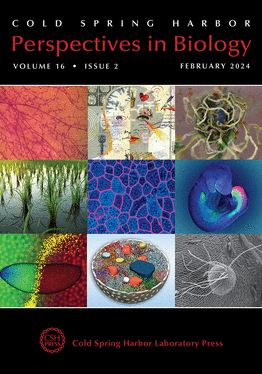将分子逻辑解构为积木式构件,重新想象大脑皮层的连接性
IF 6.9
2区 生物学
Q1 CELL BIOLOGY
引用次数: 0
摘要
全面的神经元连接图为了解神经回路结构奠定了基础。在一个神经回路中,神经元的形态、电生理学、基因表达、活动和其他神经元特性各不相同。因此,要构建全面的连接图,就必须在细胞分辨率上将神经元的各种特性(包括其连接性)联系起来。一种常用的方法是以基因表达谱为锚,将所有其他神经元属性与之关联起来。基因组学和解剖学技术的最新进展极大地提高了确定神经元长程投射并将其与基因表达谱联系起来的能力。这些研究揭示了基因-投射关系中前所未有的细节,但也凸显了在理解这种关系时所面临的概念挑战。在本文中,我将利用最先进的神经解剖学和转录组学技术,深入探讨近期研究的发现和挑战。在此基础上,我提出了一种方法,着重通过基因表达谱和投射的基本特征来理解基因与投射的关系,这些特征分别与潜在的细胞过程相关联。然后,我将讨论投影和基因表达谱的发育轨迹如何带来额外的挑战,以及如何使跨时间的基因-投影关系成为必要。最后,我探讨了一些互补策略,这些策略结合在一起可以为基因-投影关系提供一个全面的视角。本文章由计算机程序翻译,如有差异,请以英文原文为准。
Reimagining Cortical Connectivity by Deconstructing Its Molecular Logic into Building Blocks
Comprehensive maps of neuronal connectivity provide a foundation for understanding the structure of neural circuits. In a circuit, neurons are diverse in morphology, electrophysiology, gene expression, activity, and other neuronal properties. Thus, constructing a comprehensive connectivity map requires associating various properties of neurons, including their connectivity, at cellular resolution. A commonly used approach is to use the gene expression profiles as an anchor to which all other neuronal properties are associated. Recent advances in genomics and anatomical techniques dramatically improved the ability to determine and associate the long-range projections of neurons with their gene expression profiles. These studies revealed unprecedented details of the gene–projection relationship, but also highlighted conceptual challenges in understanding this relationship. In this article, I delve into the findings and the challenges revealed by recent studies using state-of-the-art neuroanatomical and transcriptomic techniques. Building upon these insights, I propose an approach that focuses on understanding the gene–projection relationship through basic features in gene expression profiles and projections, respectively, that associate with underlying cellular processes. I then discuss how the developmental trajectories of projections and gene expression profiles create additional challenges and necessitate interrogating the gene–projection relationship across time. Finally, I explore complementary strategies that, together, can provide a comprehensive view of the gene–projection relationship.
求助全文
通过发布文献求助,成功后即可免费获取论文全文。
去求助
来源期刊

Cold Spring Harbor perspectives in biology
CELL BIOLOGY-
CiteScore
15.00
自引率
1.40%
发文量
56
审稿时长
3-8 weeks
期刊介绍:
Cold Spring Harbor Perspectives in Biology offers a comprehensive platform in the molecular life sciences, featuring reviews that span molecular, cell, and developmental biology, genetics, neuroscience, immunology, cancer biology, and molecular pathology. This online publication provides in-depth insights into various topics, making it a valuable resource for those engaged in diverse aspects of biological research.
 求助内容:
求助内容: 应助结果提醒方式:
应助结果提醒方式:


